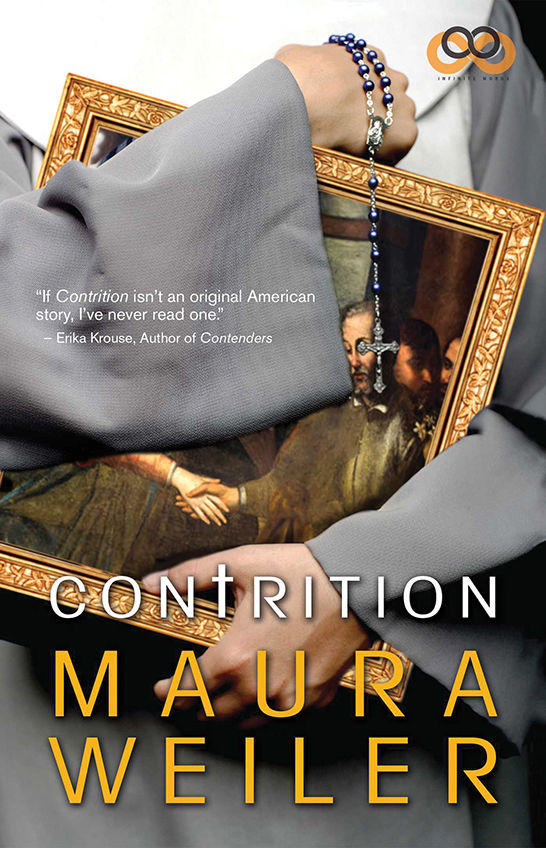The narrator of “Contrition” attended Mass to rebel against her agnostic, adoptive parents. As an adult and a writer, Dorie felt drawn to a cloister in Big Sur.
There she confirms she has an identical twin sister who had been raised by their biological father. Dorie finds excuses to remain at the cloister, longing to get close to her sister, only to find her twin, a cloistered nun, has taken a vow of silence.
I had the pleasure of meeting the author, Maura Weiler, at the Catholic Literary Imagination Conference held in Los Angeles earlier this year.
“I felt called to write this book,” says Weiler. “It did not come from me. I felt like I was hearing the plot. The idea felt sent to me.”
God’s providence seems illuminated in the story of the book’s creation and publication. However, doubt crept in quickly.
Weiler, a film executive at the time, says, “I didn’t feel qualified. I was writing screenplays. I didn’t want to write a novel. And … well. I’m not the world’s greatest Catholic.”
While the plot came to Maura in 10 minutes, the writing of the book took nearly a decade. Weiler is an ambitious, achiever and graduate of both the University of Notre Dame and the University of Chicago.
Maura attended the Liturgy of the Hours open to the public at the Monastery of the Angels at 1977 Carmen Avenue. The Archdiocese of Los Angeles is the central resource for Weiler’s research.
She met with Sister Kathleen Bryant, who calls herself “a talent scout for God,” and learned that she is not alone in finding a “reluctant vocation,” as they are called.
Weiler attended seminars such as “How to tell your family you are considering a vocation,” “How to make the financial transition to a vow of poverty,” and “Celibacy: Is it Right for Me?”
Weiler met people just like herself, marketers, accountants and scholars with PhDs, all discerning a call to religious life.
Weiler credits her spiritual growth through her research with the evolution of her main character’s development over years of revision.
“It all goes back to acceptance,” she says. With the help of her faith community, she adds, “I got to the point where I just understood that I am a child of God and that I am flawed and that that is OK.”
In contrast to the plot’s inspiration seeming to be heaven sent, the publication of the manuscript took over six and a half years. Weiler shook her fist looking upward saying, “I didn’t even want to write this novel,” with a smile.
Weiler gave up. Two weeks later she received an email informing her that her agent had sold her manuscript to Infinite Words, a new Simon and Schuster imprint.
An argument for this novel being meant to be is the way in which Weiler’s own life imitated her art. First, her now loving husband fell in love with her while reading the manuscript. The couple went on to adopt two daughters.
When asked what more can be done to encourage adoption, Maura feels very strongly that we must “honor and respect the birth mothers for their sacrifice, courage and strength. I want to give the birth mothers the dignity that they deserve.” Weiler sees the love in the eyes of the biological mothers when the Weiler family visits.
Weiler dedicates this novel to the late Christine Taber, whose work and friendship inspired the artwork in “Contrition.” Look for references to the St. Monica Church and school in “Contrition,” which is set in Los Angeles and Big Sur.
The stunning depiction of the “Mylanta nun” (a minor character) alone makes this year’s Spine Time summer beach book selection worth reading.

